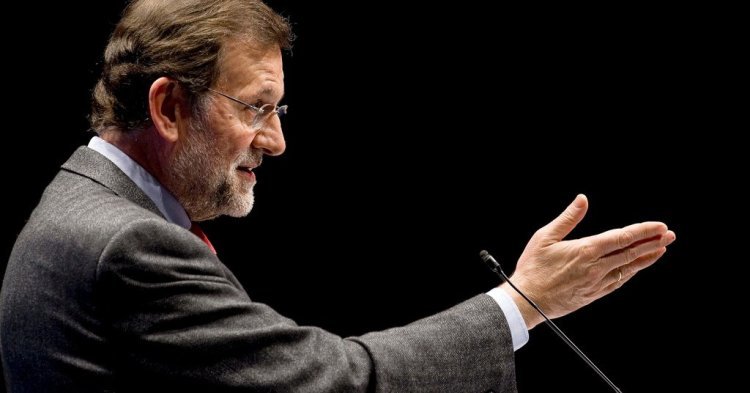A brief history of Spanish politics, characterised by the two-party system
Since the first Spanish legislative election, the political landscape on the national level has been characterised by a steady two-party system resulting from the alternation between the PSOE – whose membership ranges from liberal social democrats to nationalist and interventionist leftists – and the PP which has elements ranging from the liberal centre to the most conservative right, the heirs of Francoism. Since the 1982 election, regarded as the first truly democratic election, the country has been ruled by socialist and PP-led governments.
The culture of a two-party rule has yielded absolute majorities, and only occasionally relative ones. Even when the leading party of the government had to invite nationalist parties on board, like between 1996 and 2000 when the PP needed the support of the Basque Nationalist Party (PNV) to form a majority government in the Congress of Deputies, the goal was to gain a dozen supplementary seats to reach an absolute majority in exchange for a couple of carefully picked ministerial posts given to the party which pledged to support the governing party in the Congress. However, these days this political tradition cannot be sustained, as new parties are gaining strength and entering the lower chamber of the legislature.
The end of absolute majorities can mark a lasting change in Spanish politics
The distribution of seats has changed completely since the arrival of forces like Podemos (radical left inspired by Bolivar) and Ciudadanos (moderate and liberal centre) into the Congress in 2015. Spain has shifted from a two-party system to a multiparty system. Ever since, the tradition of absolute majorities – or relative majorities only a dozen seats short of an absolute one – which contributed to the absence of dialogue and a culture of making parliamentary pacts to form governments has been challenged, since neither one of the established parties is in the position to attain an absolute majority any longer.
This unprecedented situation was at hand after the legislative election last winter, when parties established less than ten years ago made gains. The PP came out on top with 123 seats, PSOE got 90 seats, Podemos and its allies got 69, while Ciudadanos got 40 and different Catalan, Basque and Canarian regionalist and secessionist parties got 28. From the result, it could be inferred that a majority government cannot be formed without a coalition between three or four big parties, and opinions diverged and tension increased. The attempt to form an alliance between the PSOE and Ciudadanos resulted in an agreement to co-govern, and the union called on Podemos to support it to create a coalition supplanting the PP in power, but Podemos refused. Later, another alliance between Ciudadanos and the PP was formed to create a “union against extremism and communism”, but above all to resist any attempts to dismantle Spain, with which Podemos went along by supporting referendums on self-determination.
Unhelpful third election caused by the incapability of parties to negotiate?
The political deadlock and the incapacity of the coalitions to form a government led, for the first time in more than forty years, to a dissolution of the Congress and a rerun of the vote. And the result of the new legislative election held last summer was nearly identical, with differences of only ten seats or so. The PP still won, with a bit more than ten extra seats (137) while Ciudadanos, at 32 seats, lost nearly as many. Meanwhile on the left, PSOE’s support remained stable (85 seats), as Podemos which had united with the traditional communist Izquierda Unida party under the name Unidos Podemos won no more than two seats with the strategy, totalling 71. Regionalist and secessionist parties totalled no more than 25 seats.
The voter turnout decreased from 69.7% to 66.5% between the two elections. The rerun of the election also strongly degraded the image of Spanish democracy in the eyes of the voters, as the two established parties and the two emergent ones refused to address the main concerns of the Spanish, including the relaunching of the economy, the question of Catalan independence and the nationwide battle against corruption which has infested the country for more than two decades. However, the positions remain unchanged, and fearing that a third election, in which the turnout wouldn’t necessarily even reach 50%, the federal committee of the PSOE party decided to give in on October 23. After offering the outgoing Prime Minister Mariano Rajoy the opportunity to form a new government, the PSOE has had to pay dearly for its decision. Indeed, more than 30,000 members renounced their membership the following day.
It seems difficult to find a way out of the crisis which marks a turning point in Spanish political history. Until now, the biggest party has enjoyed unconstrained power. From now on, since the biggest party cannot obtain an absolute majority, it has to make concessions to its political platform. It remains to be seen whether in the future dialogue and a culture of governmental pacts will prevail over intransigence and political egoism in certain parties. If one believes Mariano Rajoy, this new era can be “a blessing for Spain”, as no significant reform can be made without the approval of a part of the opposition.
To be continued.


Follow the comments: |
|
